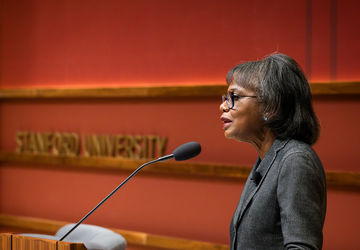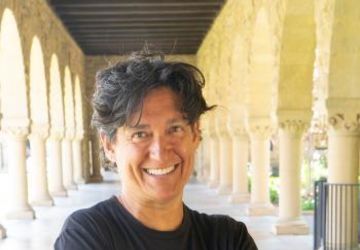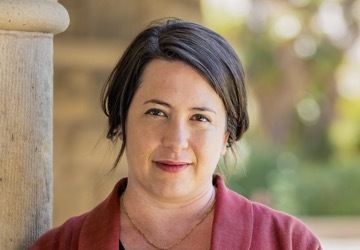More Inclusive Gender Questions Added to the General Social Survey

The General Social Survey, or GSS, is one of the most important data sources for researchers studying American society. For the first time ever in its nearly 50-year history, the survey’s 2018 data release includes information on respondents’ self-identified sex and gender. The new data will allow researchers to measure the size of the transgender and gender non-binary populations and identify the challenges they face, information that can in turn shape public policy. The research of former Clayman Institute faculty fellow, Aliya Saperstein, supported this important change.
First fielded in 1972, the GSS is an especially important source of longitudinal data for social scientists. Longitudinal data derive value in part by asking identically worded questions at each time point. This allows researchers to attribute changes in how respondents answer demographic, attitudinal, and behavioral questions to real changes over time rather than to changes in question wording. Changing or adding questions is not simple. Old questions may be known to be valid, whereas new questions may pose challenges related to understandability and reliability. Researchers may be uncertain about whether new questions really measure what they believe they do. However, over time, old questions may not accurately reflect newer academic understandings of the concepts they are meant to measure. When budgets are fixed, survey designers make tradeoffs when deciding whether to keep an old question or update it.
On previous surveys, interviewers selected “male” or “female” on behalf of—and without directly asking—respondents. Yet, since the GSS’s first iteration, social scientists’ understanding of sex has changed markedly in ways that conflict with this measurement.
These tensions are embodied by the measurement of sex historically used by the GSS. On previous surveys, interviewers selected “male” or “female” on behalf of—and without directly asking—respondents. Yet, since the GSS’s first iteration, social scientists’ understanding of sex has changed markedly in ways that conflict with this measurement. For one, many scholars differentiate sex from gender. They understand sex to be based in biological factors, like anatomy, and comprised of categories like “male,” “female,” and “intersex.” Gender, on the other hand, involves behavioral expectations and is comprised of categories like “men,” “women,” “transgender,” and more. Additionally, social scientists acknowledge the importance of self-identification, and so seek to know how the respondent describes their own gender rather than how the interviewer describes it.
In recent years, sociologists have raised concerns about how surveys measure sex. Laurel Westbrook, associate professor of sociology at Grand Valley State University, and Aliya Saperstein, associate professor of sociology at Stanford University and former Clayman Institute faculty fellow, examined the questions used to measure sex on four of the largest and longest-running social science surveys, including the GSS. In an article published in Gender & Society in 2015, they critiqued survey questions for treating sex and gender as equivalent, immutable, and easily identified by others. According to Saperstein, precisely measuring sex and gender is an essential step in drawing attention to issues, like discrimination, faced by transgender and gender non-binary people. Saperstein said, “Whether we like it or not, numbers are what convince policymakers, what people turn to when they’re trying to make powerful rhetorical arguments about why something matters. They want a percentage.” Yet previously available data did not allow researchers to measure the size of the transgender and gender non-binary populations, let alone determine whether they are disadvantaged.
In the spring of 2014, Saperstein and Westbrook submitted a proposal to the GSS Board of Overseers to add several new questions related to sex and gender to the 2016 survey. Among these questions was a so-called two-step gender question, which asked respondents to separately identify the sex they were assigned at birth and their current gender. To illustrate that these questions were valid, Saperstein and Westbrook pre-tested the questions using national surveys. (Their pre-test data is publicly available at openICPSR.) According to Saperstein, the board was unable to add their proposed questions to the 2016 GSS because of budgetary constraints.
Other sociologists had similar concerns about the sex measure on the GSS. D’Lane Compton, associate professor of sociology at the University of New Orleans, Kristen Schilt, associate professor of sociology at the University of Chicago, and Danya Lagos, doctoral candidate in sociology at the University of Chicago, submitted a proposal to add questions to the 2018 GSS. In addition to proposing several attitudinal questions, they advocated for the two-step gender question. Using previously published studies and other datasets, they provided evidence to the members of the GSS Board of Overseers that the two-step question was reliable. Brian Powell, professor of sociology at Indiana University Bloomington and then-board member, said board members were concerned about measurement error—for instance, resulting from respondents misunderstanding the question—and small sample size. Still, many board members were convinced that the sex question historically used by the GSS did not accurately reflect the experience of some people in the United States and needed to be changed. “I think it’s worth it, and the board thought it was worth it,” Powell said.
The two-step gender question was adopted by the board and fielded in 2018. The adoption represents, in Powell’s words, a “truly collective effort” between the sociologists who advocated for the change, the GSS Board of Overseers, the GSS principal investigators, funders of the GSS such as the National Science Foundation, and NORC, the independent research organization at the University of Chicago that runs the GSS. Westbrook credits a number of researchers for advocating for the change in recent years, including Clayman Institute Director Shelley J. Correll and Stanford Professor (Emerita) of Social Sciences Cecilia Ridgeway, as well as Powell, Compton, Schilt and Lagos.
The two-step gender question was fielded to just over 1,400 respondents. The first question reads, “What sex were you assigned at birth? (For example, on your birth certificate)” and allows respondents to select “Female,” “Male,” “Intersex,” or “No answer.” The second question asks, “What is your current gender?” Respondents were able to select “Woman,” “Man,” “Transgender,” “A gender not listed here,” and “No answer.”
The two-step gender question was fielded to just over 1,400 respondents. The first question reads, “What sex were you assigned at birth? (For example, on your birth certificate)” and allows respondents to select “Female,” “Male,” “Intersex,” or “No answer.” The second question asks, “What is your current gender?” Respondents were able to select “Woman,” “Man,” “Transgender,” “A gender not listed here,” and “No answer.”
The 2018 data was released in March of this year, so researchers already can access its more than 1,000 variables, including the new two-step gender question. Saperstein said that nine, or 0.6%, of the 1,397 respondents who answered the two-step gender questions can be considered transgender or gender non-binary. Saperstein noted that, because of the small sample size, the data cannot yet be used to answer the most pressing, statistical questions about the transgender and gender non-binary populations. Researchers will have to wait for future data releases, which also will include the two-step gender question. For now, Saperstein said, “Just having the questions on the survey offers a different kind of a power, a kind of symbolic power that recognizes the actual gender diversity of the population.”
The data eventually can be used to assess any disadvantages transgender and gender non-binary people are experiencing, which can be used to shape public policy. Compton, the sociologist from the University of New Orleans, said, “I think if we want to make real change and have resources and rights, we do need to have these numbers. Those are important.”
(photo by Zackary Drucker for The Gender Spectrum Collection)


